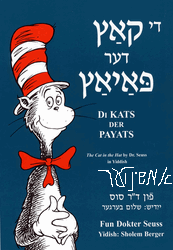?כיצד מנחמין את האבילים
msmedia.a7.org/arutz7/heb-video/05/web/funeral.wmv
משנה תורה להרמב"ם
הלכות אבל פרק יב
ז[ו] המלקט עצמות--אין אומרין עליהם קינים ונהי, ולא ברכת אבילים, ולא תנחומי אבילים. אבל אומרין עליהן דברי שבח להקדוש ברוך הוא, ודברי כיבושין. [ז] המפנה ארונו של מת ממקום למקום--אם שדרו של מת קיימת--עומדין עליו בשורה, ואומרין עליו ברכת אבילים ותנחומי אבילים, ומספידין אותו, אף על פי שהעבירוהו לאחר שנים עשר חודש
Rough translation:The Rambam states that if we gather a loved ones bones for reinterment, we do not recite laminations, funeral chants, the mourner’s blessing, nor do we console, we just thank the Lord. If we move the coffin of a departed loved one, we stand in consolation lines, say the mourners blessing and eulogize even after a year, as long as the spine has not as of yet decomposed.
-amshinover:if you have nothing nice to say, say it here
משנה תורה להרמב"ם
הלכות אבל פרק יב
ז[ו] המלקט עצמות--אין אומרין עליהם קינים ונהי, ולא ברכת אבילים, ולא תנחומי אבילים. אבל אומרין עליהן דברי שבח להקדוש ברוך הוא, ודברי כיבושין. [ז] המפנה ארונו של מת ממקום למקום--אם שדרו של מת קיימת--עומדין עליו בשורה, ואומרין עליו ברכת אבילים ותנחומי אבילים, ומספידין אותו, אף על פי שהעבירוהו לאחר שנים עשר חודש
Rough translation:The Rambam states that if we gather a loved ones bones for reinterment, we do not recite laminations, funeral chants, the mourner’s blessing, nor do we console, we just thank the Lord. If we move the coffin of a departed loved one, we stand in consolation lines, say the mourners blessing and eulogize even after a year, as long as the spine has not as of yet decomposed.
-amshinover:if you have nothing nice to say, say it here


1 Comments:
At 9/07/2005 4:28 PM, Jameel @ The Muqata said…
Jameel @ The Muqata said…
Amshi - Its important to understand the context of the Rambam. The המלקט עצמות that the Rambam writes about is the normal way of Burial that Jews used to do. They would bury a body (or leave it in a cave). After a year, the eldest son (or senior closest relative to the deceased) would dig up the bones of the deceased (or gather them from the cave). The bones would then be placed in a gluskema (an ossuiary) -- a stone box or pottery jar and then placed in a cave. In Bayit Rishon time, many of these potteries with bones would be thrown into Mearat HaMachpeila (according to the midrash - the entrance to Gan Eden), which is why bones and pottery were found during the famous incursion into MeArat HaMachpeila in the 80's by Noam Arnon and company.
Since it was considered a big honor to מלקט עצמות it was not a day of mourning.
The Gush Katif exhumations were a tremendous chilul Hashem, and a day of tradgedy for Klal Yisrael. See my post today for more on this subject. (muqata.blogspot.com)
Post a Comment
<< Home